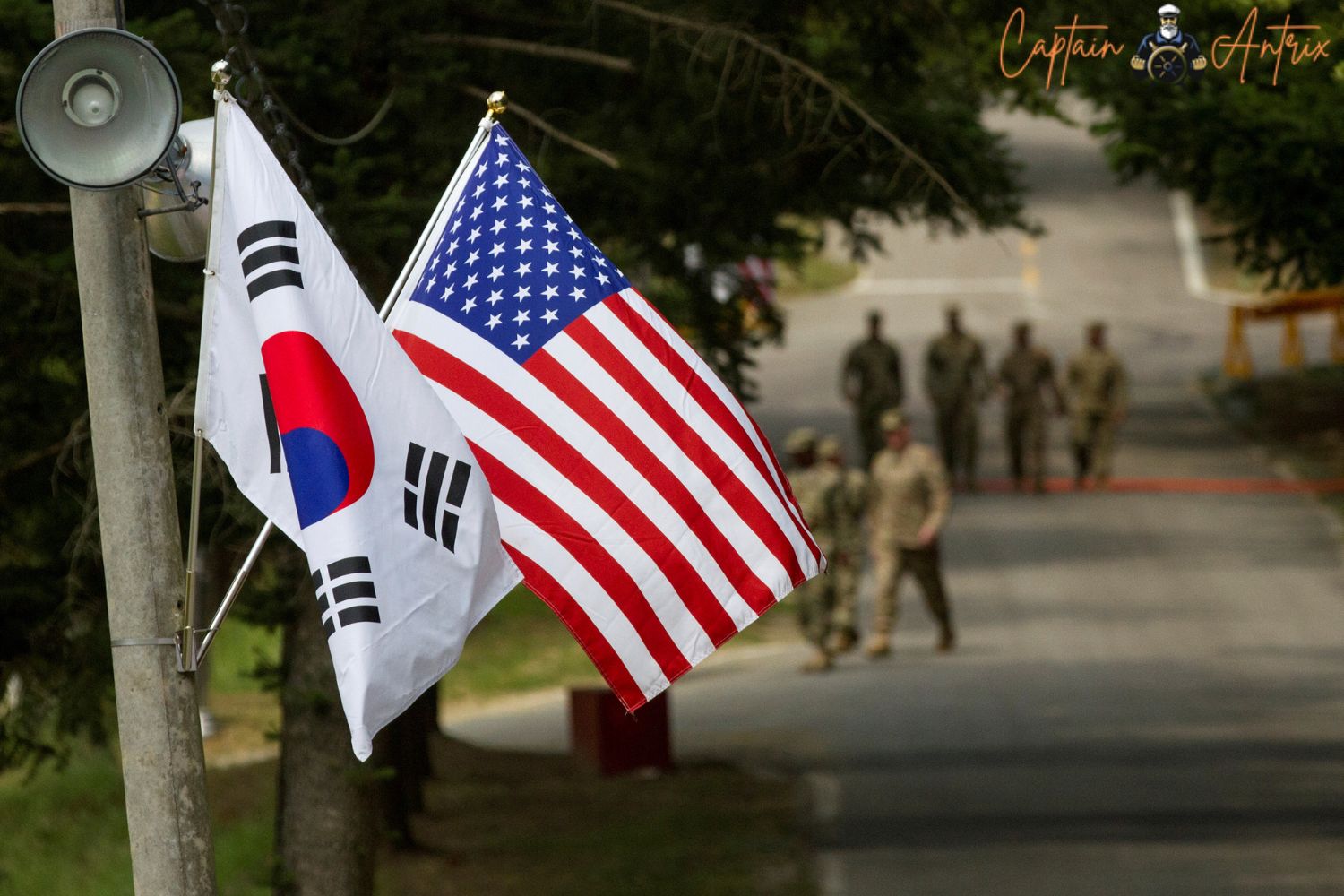
In a remarkable display of unity and military prowess, the air forces of the United States, South Korea, and Japan recently conducted a rare aerial drill featuring a nuclear-capable bomber. This exceptional event underscores their commitment to enhancing military cooperation in response to the escalating threats originating from North Korea.
For the very first time, a B-52H Stratofortress bomber, accompanied by two F-16 Fighting Falcons, two South Korean F-15K Slam Eagles, and two Japanese F-2s, soared through the skies in a joint exercise. This extraordinary drill took place within air-defense zones located south of the Korean Peninsula, encompassing both Japan and South Korea.
The three nations jointly demonstrated their unwavering security cooperation and solidarity, reinforcing their intention to continue collaborating for the greater good. The South Korean air force, in particular, expressed its dedication to maintaining close ties with the United States and Japan, as articulated in an official news release.
The U.S. Indo-Pacific Command issued a statement underscoring the significance of the drill. It emphasized how the exercise builds upon the continued interoperability of their combined forces, showcasing the robust trilateral relationship shared among the United States, Japan, and South Korea.
"Interoperability" is a critical term within the military context, signifying the capability of one nation's military to effectively employ the training methods and equipment of another.
The INDOPACOM statement also highlighted the international cooperation, reflective of their shared values and determination to counter any threats to regional stability. It further reiterated their unwavering commitment to promoting peace and prosperity in the Indo-Pacific region and maintaining an environment that is free and open to all.
U.S. Ambassador to South Korea Philip Goldberg lauded the drill as a testament to their enduring resolve. He took to social media to emphasize that this collaboration marks the beginning of a new era in defense partnership, one that strengthens their ability to deter potential threats effectively.

The B-52H Stratofortress bomber, assigned to the 96th Bomb Squadron out of Barksdale Air Force Base, made a historic landing in South Korea on October 17, marking the first such landing in the region in over three decades. During its visit, the bomber conducted flyovers in conjunction with South Korean F-35A Lightning IIs as part of the Seoul Aerospace and Defense Exhibition.
This collaborative exercise is not an isolated event. It is common for U.S. bombers, such as the B-52H, to conduct drills alongside Japanese and South Korean fighter jets in displays of force following North Korean nuclear tests. For instance, on July 13, a B-52H and four F-16s flew in formation with three South Korean F-15s, mere days after North Korea fired an intercontinental ballistic missile, setting a flight duration record for the regime.
On August 30, two U.S. B-1 Lancer bombers joined forces with eight Japanese F-2s and four F-15 fighters, conducting operations over the Sea of Japan, also known as the East Sea. This display of military might showcased the alliance's capability to respond rapidly and decisively to potential threats to Japan and the surrounding region.
In yet another instance of joint operations, at least one B-1, along with an undisclosed number of South Korean FA-50 fighters, flew alongside each other over the Yellow Sea, according to South Korea's Ministry of National Defense.
North Korea's recent testing of 21 ballistic missiles, including four intercontinental-range missiles, within a span of just 14 days this year, has prompted the U.S., South Korea, and Japan to intensify their trilateral military drills in response to the ongoing provocations from Pyongyang.
On October 9, the three allies engaged in their first maritime training exercise together since 2016. This two-day anti-piracy drill included the Ronald Reagan Carrier Strike Group, led by the aircraft carrier USS Ronald Reagan, demonstrating their collective readiness to tackle threats in the maritime domain.
This increase in joint exercises follows a commitment made by President Joe Biden, South Korean President Yoon Suk Yeol, and Japanese Prime Minister Fumio Kishida, who held their inaugural summit at the Camp David presidential retreat in Maryland. During this meeting, they pledged to elevate their military cooperation to effectively confront the North Korean threats that jeopardize their collective interests and security.
In summary, the rare aerial drill featuring a nuclear-capable bomber underscores the deepening cooperation between the U.S., South Korea, and Japan in response to the growing security challenges emanating from North Korea. These joint exercises serve as a testament to their unwavering commitment to regional stability and security in the face of evolving threats.
